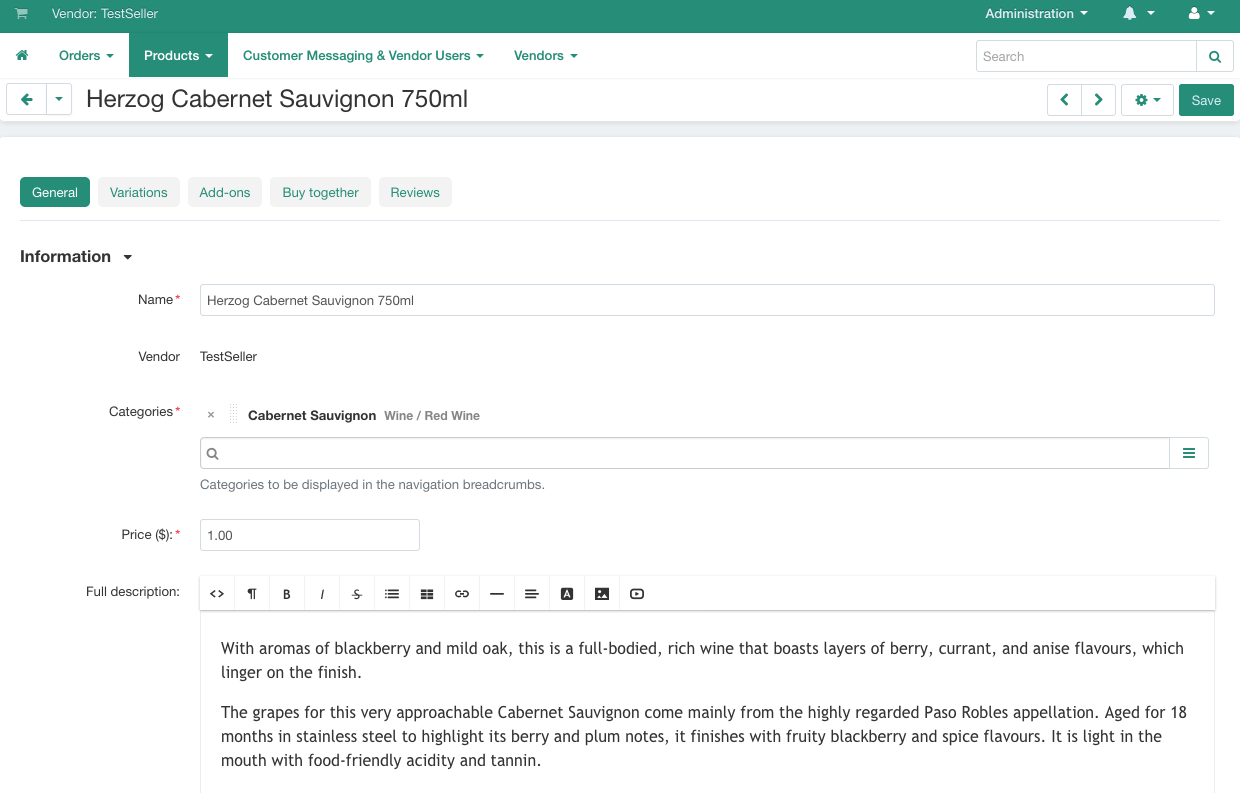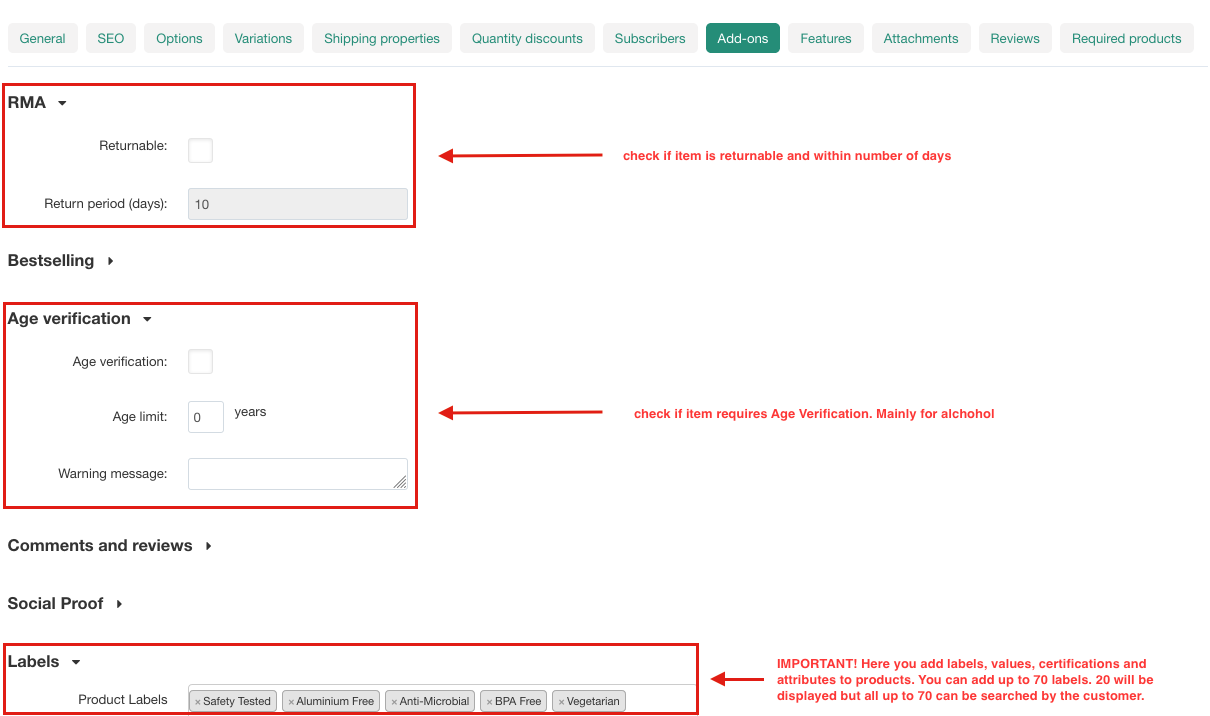Ready to Start Selling?
Product Fields & Properties
When you create or edit a product, you should specify the following product fields and properties. For convenience, they are grouped by tabs on the product editing page.

General
- Name: the name of the product as it appears on the store. Add the BRAND name to the product’s name. We recommend NOT creating long and varied product names. CellarsMarket indexes and searches search words as well as names. So having convoluted product names isn’t necessary.
- Categories: the categories that the product will be assigned to. When a product has multiple categories, the first category on the list will be the main category for the product. To change the main category, just drag another category in its place. SPECIAL NOTE: Pay attention to the Parent Category next to the Sub-Category to appropriately place your product.

The more accurate the sub-category the greater the likelihood that a customer can find your product in its appropriate category. Don’t list it in the Parent category. Always look for the most exacting and appropriate categories.
- Price: This is the base price you are selling your product for.
- Full description: The product description that will appear on the product details page of the storefront. The description can be either a plain text or a formatted HTML text. If you’re not familiar with HTML code, you can rely on the visual editor: you simply edit product description like a document, and the visual editor adds the HTML code automatically.
- Status: the status of the product:
- Active: the product is available on CellarsMarket and appears in the product list.
- Disabled: the product is not available on CellarsMarket
- Hidden: product does not appear in the product list on CellarsMarket, but can reach a hidden product via a direct link. This is especially helpful for custom or private orders where the seller wants to send a hidden link to a specific customer for the purchase.
- Images: The images of the product. Supported formats are JPEG and PNG. Thumbnails for these images will be generated automatically.
One of the uploaded images will appear larger than the others. That’s the main product image that is displayed on the product list and on the product details page by default. To change the main image, simply drag and drop another image in its place. You can also change the order of additional images the same way.
If you hover over an image, you’ll be able to view the full-sized image, delete it, or edit its alt text. This text will be shown when the image is missing or cannot be displayed. It is a good practice to have an alternative text associated with the image, for SEO purposes. We automatically generate an Alt text for your product from its title. So if you forget to add one, don’t worry, we got you covered.
PRODUCT IMAGE SIZE RECOMMENDATION: We are recommending products be 1000 x 794. The size limit for product images is 5 MB
Pricing / Inventory
- SKU # the identifier of the product that you use in your store (a stock keeping unit or SKU); it is used to distinguish products from each other during import so that the data would be saved to the right product.
- List price: (RRP) if this price is higher than the product’s Price, then a discount label will be displayed for the product. This can be used to show a sale on the product.
- In stock: the number of products in the stock and for sale.
- Inventory: the way of tracking the inventory of the current product:
- Track with options
- Track without options
- Do not track
- If a product is tracked with options, you’ll need to specify the number of in-stock items individually for each combination of option variants.
- Minimum order quantity: the minimum number of items that a customer can buy at a time. This number will appear on the product page on the storefront, right after the product price.
- Maximum order quantity: the maximum number of items that a customer can buy at a time. 0 means no limit.
Availability
- Creation date: the date when the product was added to the catalogue. It is used for sorting products by date.
- Avail since: the date when the product becomes available for purchase. It is useful when you want to start selling at a specific date, or when the product isn’t available yet.
- Out-of-stock actions: select if customers should be able to buy the product in advance before it is not yet available for sale, or sign up to receive an email notification when the product is available.
Extra
- Short description: a short product description; it appears on the product list on the storefront. If you leave this field blank, the short description will be automatically taken from the full product description (first 300 characters).
- Search words: the list of words by which the product should be easily found by the built-in search.
- Shipping Time frame Notes (optional)— This is a convenient box to put how long a customer should expect it to take to get your product. It shows up above “Add to Cart”
Add-Ons
Here you can enrich the product offering. Most important would be to indicate if or if not a product is returnable, any Age Verification, and MOST IMPORTANTLY product labels. Other features will be automatically generated such as Bestselling rank, Comments & Reviews and Social Proof.

